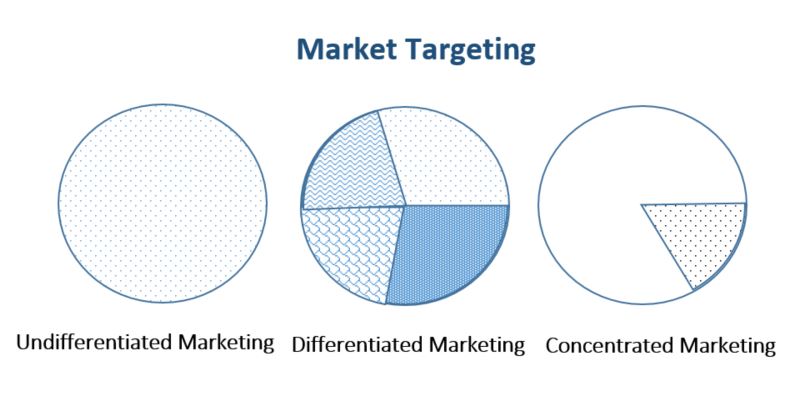Market targeting is the process through which a marketer identifies and evaluates various segments in the market and decides the number and type of segments to be targeted. It essentially involves identifying customer groups who are likely to buy a specific product or service.
Basis for Market Targeting
Factor to be considered while identifying and evaluating a target market segment include –
- Segment size and growth potential
- Company’s objectives and resources –
- Resource capability of the firm
- Cost advantage, if any
- Technological edge
- Managerial capabilities
- Market attractiveness –
- Entry & Exit Barriers
- Nature of competition
- Social & political environmental
- Environment & legal factors
Market Targeting Strategies
Market Targeting Strategies can be divided into two types –
- Limited coverage market targeting
- Full coverage market targeting
Limited coverage market targeting – When only one or few segments are selected as target market. This strategy is useful for small firms with limited resources or firms introducing a new product. It can take the following forms –
- Single segment concentration – Only one single segment is selected and is served with expertise.
- Selective Specialization – It is a multi-segment strategy in which a firm selects a number of segments which seem attractive and appropriate.
- Product specialization – The firm specializes in making a certain product for different customer groups.
- Market specialization – The firm concentrates on serving many needs of a particular segment.
Full coverage market targeting – Under this market targeting strategy, a firm attempts to serve all customer groups with all the products they might need. This strategy is usually used by large firms. It may take the following forms –

- Undifferentiated marketing – This strategy involves standardization of a product. The firm offers the same product with same marketing strategies to all market segments. It focuses on basic needs of the buyer rather than difference among different buyers. The product and marketing mix strategies are designed in a way that will appeal to the whole market. This strategy is also known as mass marketing as the organisation treats the whole market as a single segment. Under this a business develops –
- A single product
- One pricing structure
- One distribution system for mass audience E.g. coke, pepsi
- Differentiated Marketing – Under this strategy a firm targets several market segments and designs different marketing strategies for each segment. This strategy is also known as selective marketing. Here a firm differentiates its products according to the needs and expectations of different customer groups. The company attempts to appeal to different defined market segments with a specific product and unique marketing strategy tailored to suit each segment. E.g. Airlines, GM Motors
- Concentrated Marketing – It is also known as Focus marketing. It involves finding a niche market of consumers that has not been captured yet and developing goods and services for that market to appeal a large segment of consumers by offering a product/service that the competition does not. The firm goes after a large share of one or few sub markets thereby enjoying economies of scale as well as high market penetration and higher market share.
Hello would you mind stating which blog platform you’re using? I’m looking to start my own blog in the near future but I’m having a tough time making a decision between BlogEngine/Wordpress/B2evolution and Drupal. The reason I ask is because your layout seems different then most blogs and I’m looking for something completely unique. P.S Sorry for getting off-topic but I had to ask!